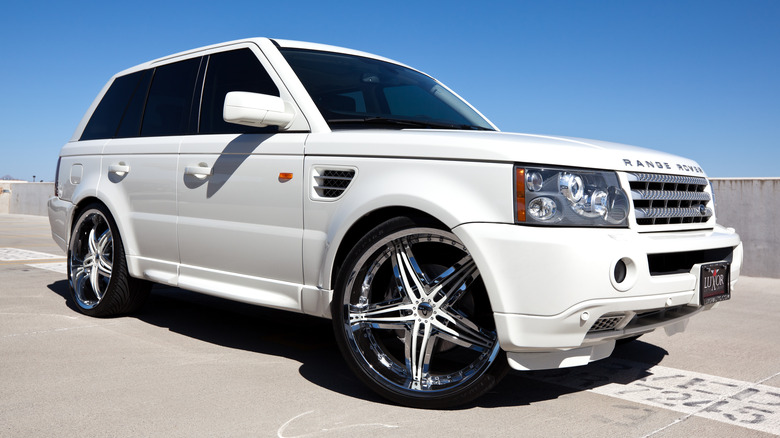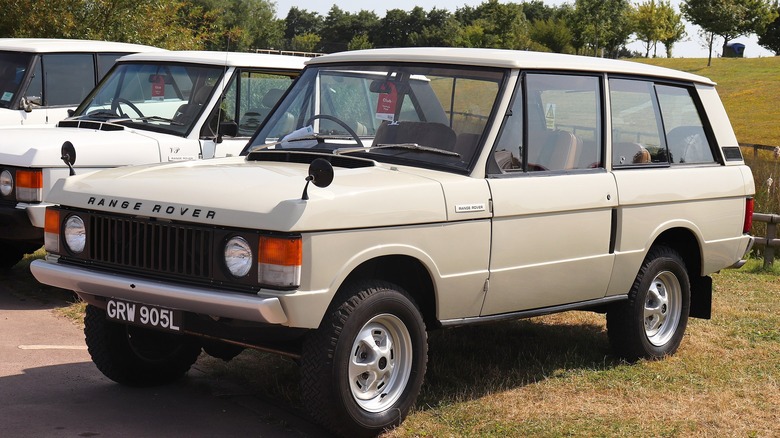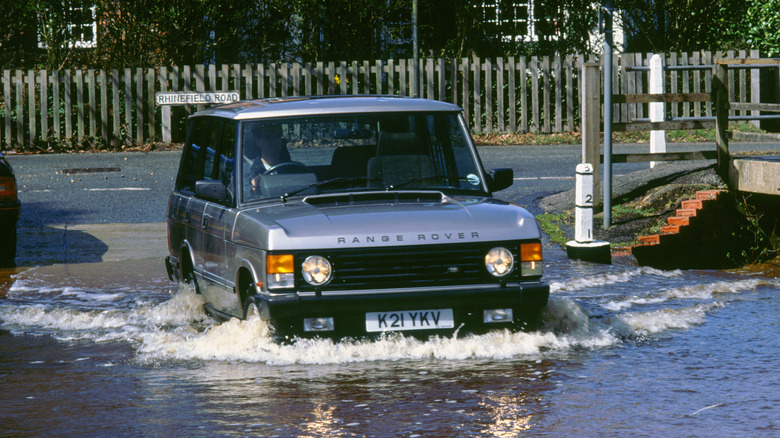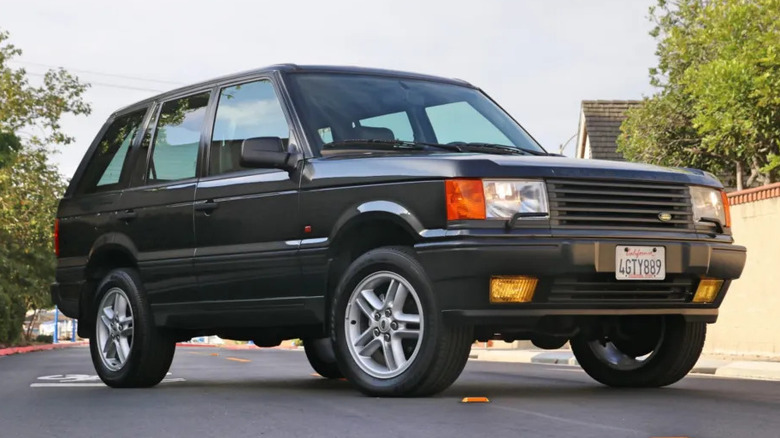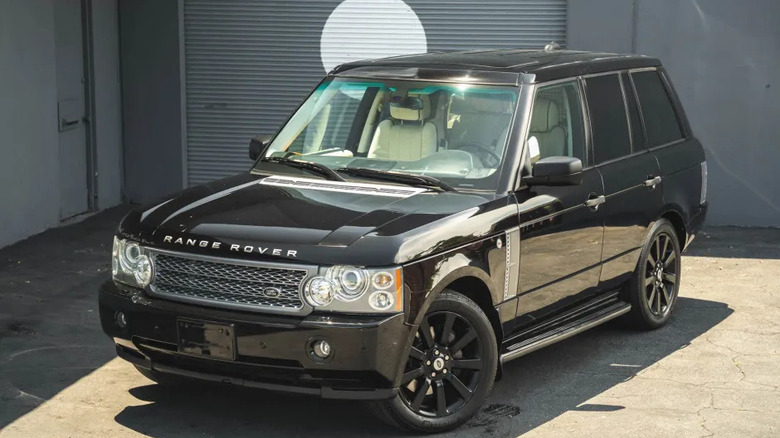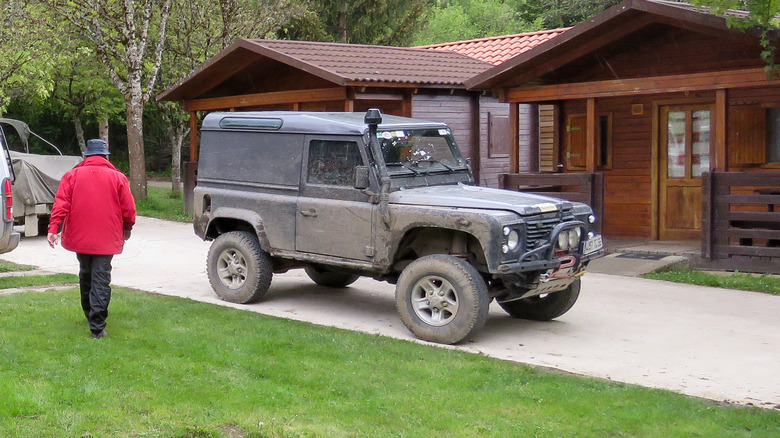The 5 Most Reliable Land Rover Engines Ever Made
Some of the world's most durable vehicles are SUVs. The Jeep Cherokee, the Toyota Land Cruiser, and the Nissan Pathfinder are all known for delivering reliable performance across 200,000 miles or more. Another SUV that has a reputation for longevity is the venerable British Land Rover.
After it sat neglected in a barn for more than half a century, the first production Land Rover model was restored and taken on a trip through the Mongolian desert, proving the staying power of these hardy beasts. The modern iterations are more luxurious than that first Rover, but they are no less dependable thanks to a steady supply of engines that have come from a variety of manufacturers including General Motors, Ford, Jaguar, and BMW. Let's take a look at the cream of the crop of the various engines that Land Rover has put in its vehicles throughout its storied history and compare the performances of the vehicles those engines went into.
Rover 8
One of Land Rover's most durable engines actually started out as a General Motors creation. Rover executives Bruce McWilliams and Bill Martin-Hurst first sourced a 215 cubic centimeter V8 from Buick in the 1960s while in search for a bigger motor for the P6 Land Rover sedan. They adapted British manufacturing processes to transform Buick's V8 into the 158 horsepower 3.5 liter V8 that Rover first used in the P5B in 1967.
The P6 and the early generations of Range Rover were the next Land Rover vehicles to get the Rover 8, and some of those Series I, II, and III Range Rovers are still running today.
The Rover 8 was also used in the Triumph TR8, the MGB GT, and the Rover SD1, as well as various Morgan models and TVR performance cars. The twin-carburetor design was phased out by the early 1990s to make room for fuel-injected engines, but vintage Rover owners who keep their cylinder head gaskets in good condition can expect long lives from their decades-old motors.
[Featured image by Vauxford via Wikimedia Commons | Cropped and scaled | CC BY 4.0]
3.9 liter V8
The Buick-inspired 3.5 liter V8 was eventually replaced by a 16-valve 3.9 liter V8 that produced 182 horsepower and 232 pound-feet of torque. Land Rover used this engine in several vehicles between 1989 and 1998, including the Defender and Discovery. In the 1989 to 1994 Discovery, the 3.9 liter V8 gave drivers an average fuel economy of about 14.3 miles per gallon. The engine was also used in the second-generation P38A Range Rover Classic, which encompassed the 1994 to 2001 model years.
The updated Range Rover is as valued for its longevity as was the original, with 1990s vintage Range Rovers commonly running past the 100,000-mile mark. One 1995 Rover even made it to 270,000 miles, which is further than the distance from the Earth to the moon.
A user named Range Rover Ray left a review of his 1998 model on cars.com, raving about the reliability of his second-generation Rover, writing, "I've had my P38 since it was new it's done a trillion miles. It never been serviced & never broken down."
4.6L V8
Land Rover introduced the 4.6 liter V8 in 1995 in Range Rover HSE models and kept that configuration available through 2002. The larger engine was capable of putting out 222 horsepower and 300 pound-feet of torque and gave the HSE trim level Range Rover an impressive 7,700 pound towing capacity. From 1996 to 2000, 4.6-equipped HSE models seem to be especially dependable, commonly running well past 100,000 miles.
Owners of Range Rovers with the 4.6 engine who left reviews of their vehicles at Edmunds gave them an average rating of 4.0 out of 5 stars, with 46% of them rating the Rover a perfect 5 out of 5. Several of the reviewers praised the engine's power and surprising fuel efficiency, and some owners pointed out that the problems they had with the vehicle were not engine-related. Runtgun wrote, "After buying a used 2000 HSE and putting about 40,000 miles on it, we've been pleasantly surprised by the reliability. In that time, we had the tie-rod ends replaced and the driver's seat heater element replaced. Nothing else has failed and it still drives like new."
Supercharged 4.2L V8
While forced induction-enhanced motors in general don't have a great reputation for reliability, the supercharged 4.2 L V8 that Land Rover used in 2008 and 2009 is a rare exception. This engine was used in specially designated Range Rover Sport models during those two model years; standard Sport HSE Range Rovers got a naturally aspirated 4.4 liter V8. Despite the smaller displacement, the supercharged V8 had a 390 to 300 horsepower advantage over its slightly larger cousin and a 410-315 lb-ft advantage in peak torque.
The 26 owners of 2008 models who left reviews at cars.com gave their supercharged Range Rovers an average rating of 4.8 out of 5 stars, including 4.6 stars for reliability.
Sparklestone from Denver, Colorado titled their review "This Rover has been so reliable," adding, "other than brakes and tires, I've had no issues with it."
User nu2maine gave their Rover five stars in every category and raved about its luxury and dependability, writing, "No wonder the Royal Family uses this vehicle on their estates. No reliability issues to report and gas mileage is better than expected."
TD5 Turbodiesel
In 1998, Land Rover built the first five-cylinder diesel engine, the TD5 turbo-diesel, and dropped in into that year's Defender model, where it lived through 2007. Land Rover initially planned to use the TD5 in some of its cars as well, but ultimately limited it to the Defender and Discovery Series II. The TD5 eventually found its way into more than 300,000 Land Rover SUVs.
Early incarnations of the TD5 had issues with the oil pump sprocket bolt not being properly secured and failure of the plastic cylinder head dowels, but after the first couple of years of production these problems were ironed out, and the TD5 earned a reputation as one of Land Rover's most reliable motors.
Owners of the TD5-powered 1995 Defender give it a 4.8 out of 5 rating at cars.com, including Sam T, who currently lives in Sarasota, Florida, but drove a Defender when he lived in Zambia and testified to the TD5's dependability. "Mostly drove on game paths through the bush to remote villages," he wrote. "Always got us to our destination and home again through the most difficult terrain. Dependability is everything there."
